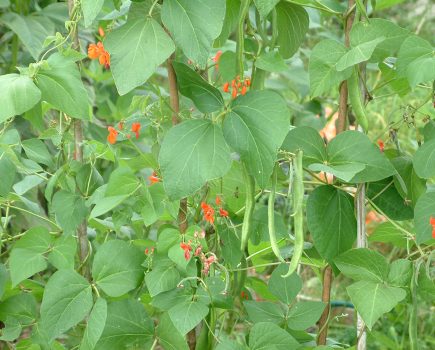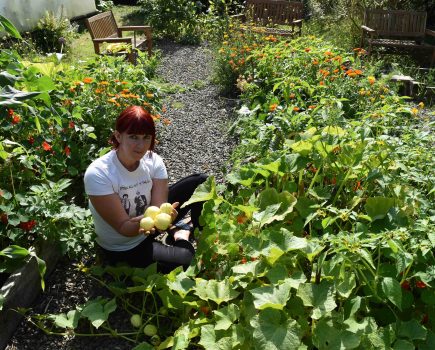MARCH 7, 2008: The face of the South East of England could change forever within 50years if opportunities to lessen the impacts of climate change are nottaken now, according to a booklet released (see below).
Buckled raillines, parched golf courses, disappearing wildlife and freak weatherdelivering alternating flood and drought could be part of adramatically changed way of life illustrated in the booklet whichdelivers a stark but simple message: If you love England, act now tosave what makes it special.Without action, by people andgovernment, everything from sport to gardening, house prices tohedgehogs and farming to fishing could undergo some form of change. Thebooklet raises awareness of what hotter drier summers, water shortages,flash floods and storms would mean to the region. It comes with atoolkit to help people communicate the reality of climate change andinspire everyone to take action.Our changing climate, ourchanging lives – South East is produced by Tomorrow’s England, acoalition of 11 organisations ranging from the National Trust to theNational Federation of Women’s Institutes, and from the Woodland Trustto WWF-UK. (3)“An increase in average global temperature ofmore than two degrees centigrade will have catastrophic results for ourplanet. Closer to home, the way we travel to work, the sports we play,our health, and our environment could all be affected by shiftingweather patterns,” explains Colin Butfield, head of campaigns at WWF-UK.“Itis also essential for the government to take a lead now with action toreduce our carbon emissions by including the 80% target for CO2reduction by 2050 in the Climate Change Bill, currently being debatedin Parliament.”Andrea Davies, senior campaigner at the Campaignto Protect Rural England, commented: “The changes which will alter theappearance of so many of our cherished landscapes in the South East area wake-up call. Climate change presents us with huge challenges, butthere are also opportunities for everyone to take action at a personaland a local level to reduce the impacts now and for generations tocome.”Ed Pomfret, head of campaigns at the Woodland Trust,added: “Climate change is already having a profound effect on thenatural environment including irreplaceable habitats like ancientwoodland, raising life changing implications for us all. This is avaluable document which not only presents a snapshot of how that mightaffect everyday life, but also provides ideas for what we can do tomake a real difference.”More than two thirds of land in theSouth East is farmed with traditional crops such as potatoes, applesand strawberries. Warmer weather could see this landscape altered withthe introduction of figs, soya and even olives, suggests the report.Gardenerswould have to learn about new, more exotic species of plants and trees.By 2050 favourites like delphiniums and lupins could be replaced bypomegranates, citrus fruits and apricots.Models suggest beech andoak trees would come under threat from gales, water logging anddrought. Some birds could lose their natural habitats and vanish fromthe region as new specieslike the black kite and the great reedwarbler take up residence. The hedgehog, already in decline, could beextinct by 2025 if its habitual food of slugs literally dries up.Asthe Mediterranean becomes too hot as a comfortable holiday destination,the south coast would become a more desirable alternative with Augusttemperatures regularly in excess of 30ºC. This would reduce carbonemissions from air travel and airport expansion; however, the increasedheat could prove disastrous for transport across the region.Hotspells could cause chaos on the roads as road surfaces suffer. On thetrains, speed restrictions from buckled and fractured rails ortrackside fires would become the norm but frozen points would be athing of the past.These higher temperatures would also impacton the health of the region. Scientists say the death rate increases3.3 per cent for every degree rise in temperature above 21.5C whileinstances of food poisoning would become more frequent.Flashfloods and storm surges are set to increase as the climate changes;this will particularly affect the low-lying South East, impacting onthousands of homes and businesses. Water demand in the region is due torise by 11% by 2030, and water will become more scarce and expensive.Hosepipe bans are likely to become permanent in many places.Racingat Cowes may increasingly be disturbed by violent summer storms andHenley regatta could be flooded out in a summer flash flood on theThames. Wetter winters would mean that rain stops play at footballgrounds across the region.If the grass burns to a crisp andwater restrictions are in place in the summer, golf, cricket andfootball could all be disrupted. Falling river levels could impact onfish stocks.With predictions that sea levels will rise by atleast 34cm by 2050 in the English Channel, beaches along the coastcould disappear and Henry VIII’s artillery castles along the Southcoast could all be affected by increased coastal erosion.ColinButfield added: “We are already witnessing changes in our climate inthe South East, along with every other part of the country. Such severescenarios could be lessened as we still have the power to make changesfor the better. The impact of homes on the environment can easily bedecreased, for instance, with new developments built to higheco-standards and renewable energy playing an increasing role inproviding our energy needs.”Our changing climate, our changing lives – South East is produced by Tomorrow’s England, a joint initiative funded by Defra http://www.defra.gov.uk/.To download a copy of the report, toolkit and images visit: http://www.climatechangeandme.net/







